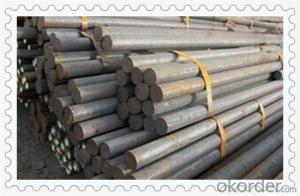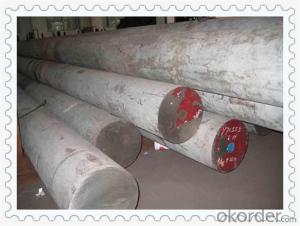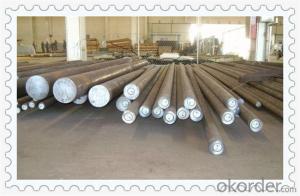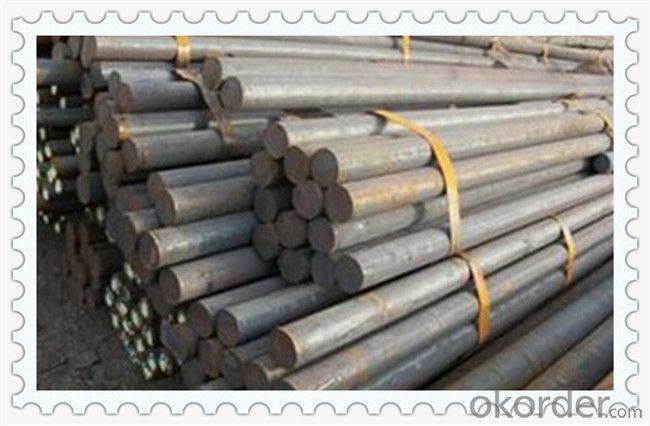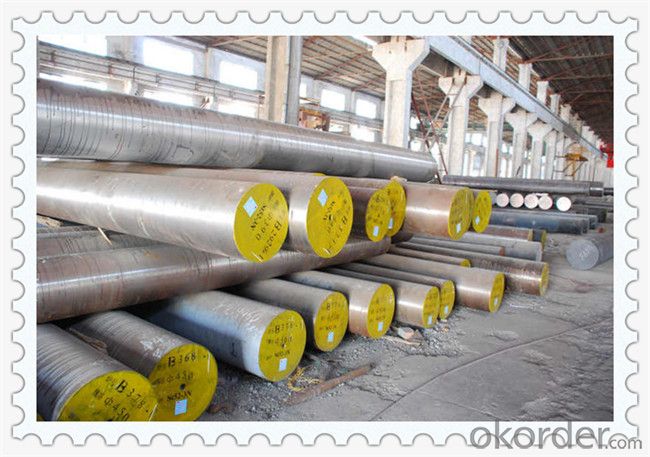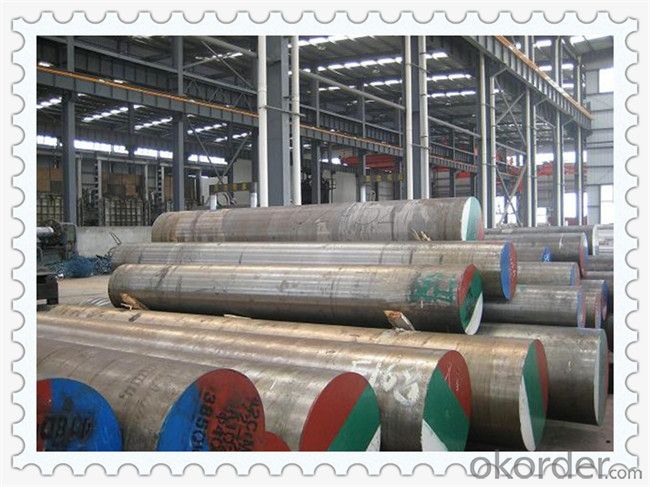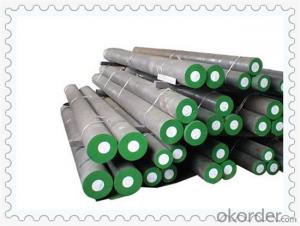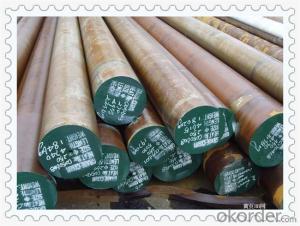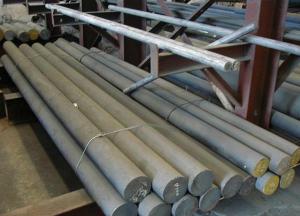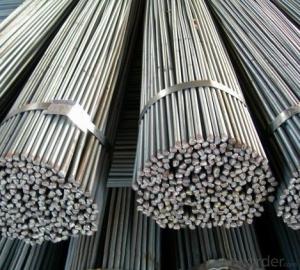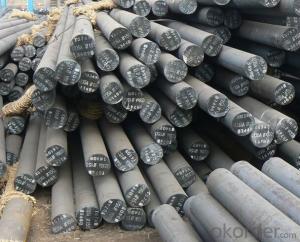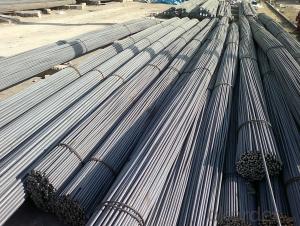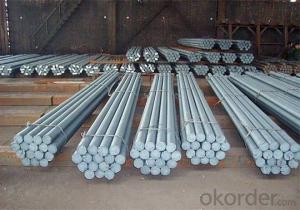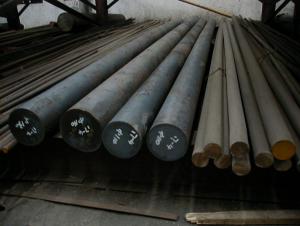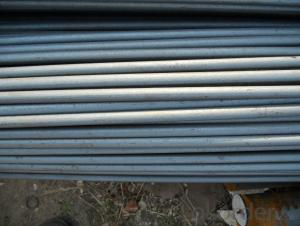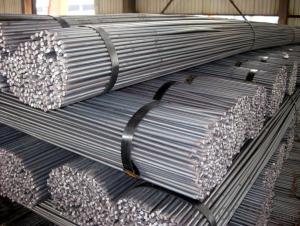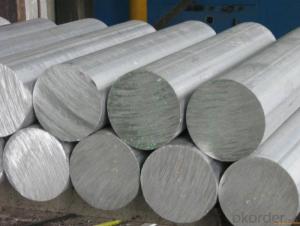Non-alloy Carbon Steel Round Bars
- Loading Port:
- China main port
- Payment Terms:
- TT OR LC
- Min Order Qty:
- 30 m.t.
- Supply Capability:
- 10000 m.t./month
OKorder Service Pledge
OKorder Financial Service
You Might Also Like
Non-alloy Carbon Steel Round Bars
Product Description
1, Diameter: 8mm-250mm rounds
5mm-9mm rods
2, Length: 2m, 3m, 5.8m, 6m or customized
3, Standard: GB, ASTM, AISI, SAE, DIN, JIS, EN
OEM technology - send detailed technical parameters for accurate quotation.
2, Produce Process: smelt iron - EAF smelt billet - ESR smelt billet -
hot rolled or forged to get the steel round bar and plate
3, Heat Treatment: annealing, normalizing, tempering, quenching
4, Surface Treatment: Black, Polished, Galvanized
5, Shape: Round, Square, Sheet, Plate, Pipe
6, Quality Assurance: We accept third party inspection for all orders.
You can ask testing organizations such as SGS, BV, etc. to test our products before shipping.
Products Show
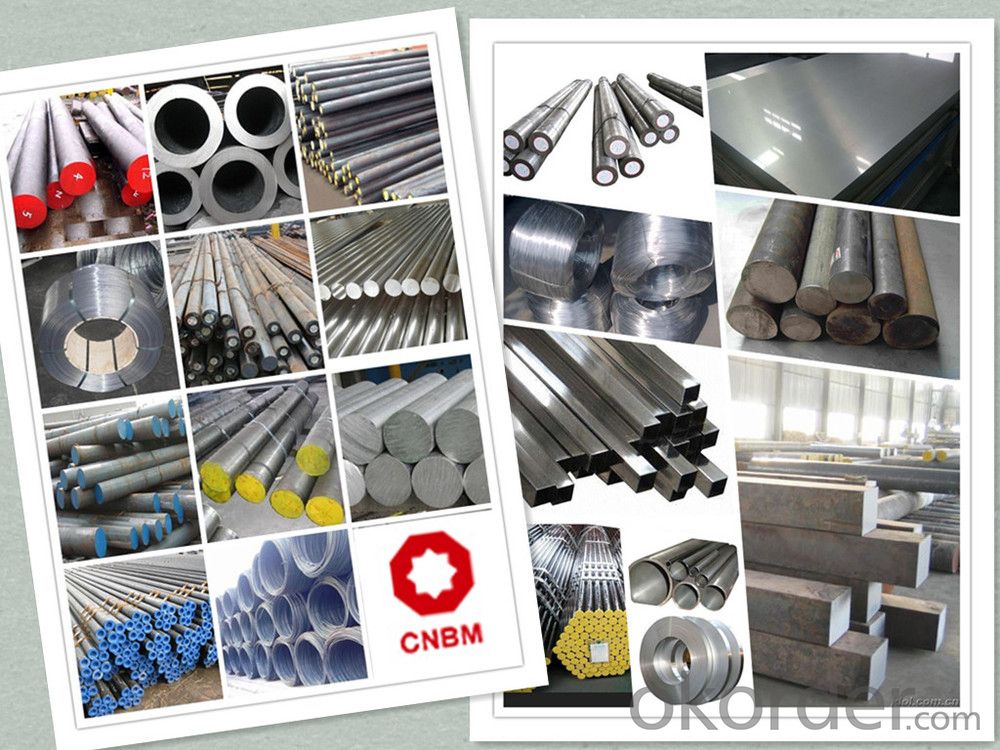
Product Overviews
| Product Name | Typical Grades | Diameter(mm) | Standard adopted |
| Carbon Steel | 20 (1020/S20C/C22) | Ø16-Ø300 |
GB/SAE/JIS/DIN
|
| 40 (1040/S40C/C40) | |||
| 45 (1045/S45C/C45) | |||
| Bearing Steel | GCr9 (51100/SUJ1) | Ø12-Ø250 | |
| GCr15 (52100/SUJ2/100Gr6) | |||
| GCr9SiMn (A485-Gr.1/SUJ3) | |||
Cr-Mo Steel | 20Cr (5120/SCr420H/20Cr4) | Ø12-Ø250 | |
| 40Cr (5140/SCr440/41Cr4) | |||
| 42CrMo(4140/SCM440/42CrMo4) | |||
| Gear Steel | 20CrNiMo | Ø16-Ø600 | |
| 20CrMn(5115/SMnC420/20MnCr5) | |||
| 20CrNiMo(8620/SNCM220/20CrMiMo2) |
Application
| Carbon Steel | Mold bottom, Plastic mold, Construction machinery parts Automobile parts, Security grills, Screens, Construction |
| Bearing Steel | Aerospace, Navigation, Nuclear energy, Chemical industry Electronic information, Petrochemical, Instrument and meter Transportation |
| Cr-Mo Steel | Mechanism & Fasteners gear, Stressed components for vehicles Engines and machines, Parts of larger cross-section |
| Gear Steel | All kinds of gears, Statically and dynamically stressed component for vehicles Engines and machine, Larger cross-section parts, Crankshafts |
Work Shop
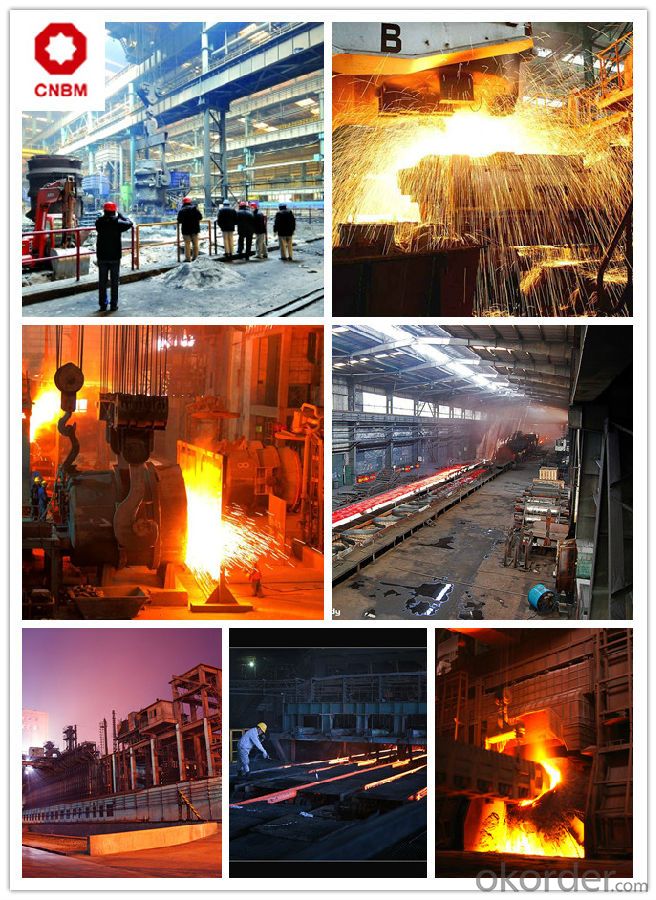
Company Information
CNBM International Corporation is the most important trading platform of CNBM group.
Whith its advantages, CNBM International are mainly concentrate on Cement, Glass, Iron and Steel, Ceramics industries and devotes herself for supplying high qulity series of refractories as well as technical consultancies and logistics solutions.

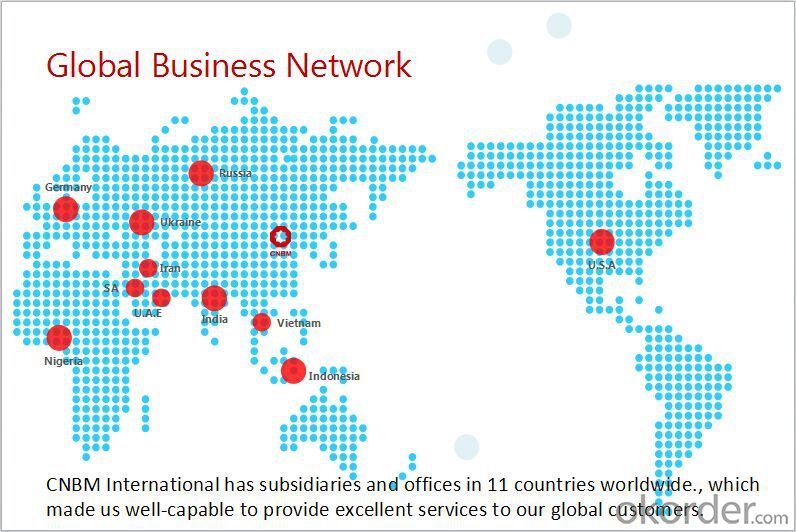
FAQ
1, Your advantages?
professional products inquiry, products knowledge train (for agents), smooth goods delivery, excellent customer solution proposale
2, Test & Certificate?
SGS test is available, customer inspection before shipping is welcome, third party inspection is no problem
3, Factory or Trading Company?
CNBM is a trading company but we have so many protocol factories and CNBM works as a trading department of these factories. Also CNBM is the holding company of many factories.
4, Payment Terms?
30% TT as deposit and 70% before delivery.
Irrevocable L/C at sight.
5, Trading Terms?
EXW, FOB, CIF, FFR, CNF
6, After-sale Service?
CNBM provides the services and support you need for every step of our cooperation. We're the business partner you can trust.
For any problem, please kindly contact us at any your convenient time.
We'll reply you in our first priority within 24 hours.
Packaging & Delivery
1, Packaging: seaworthy package or as required
2, Delivery: 35-45 days or based on quantity
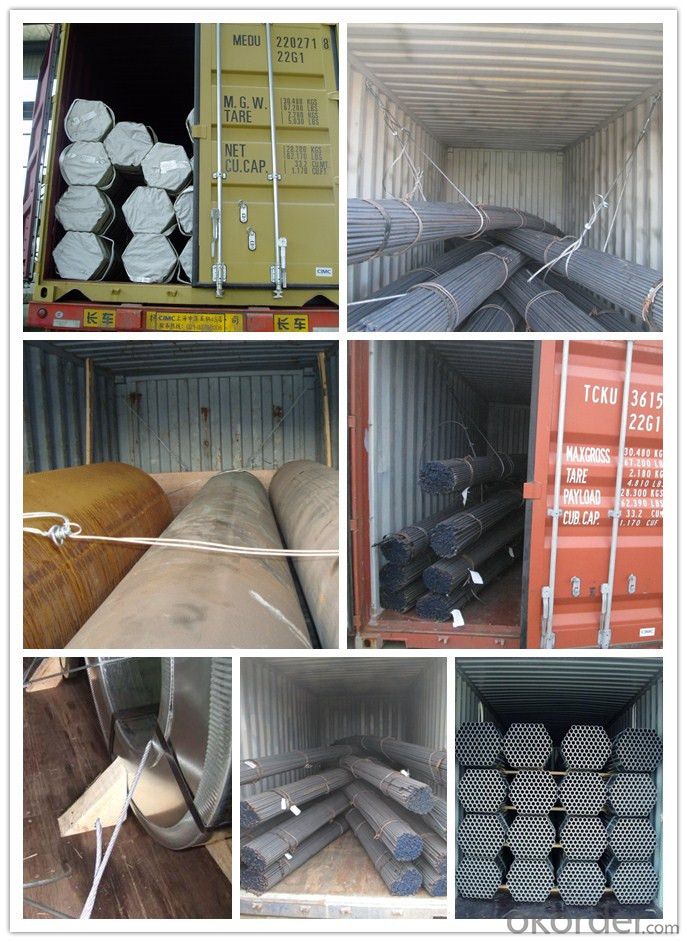
- Q: The difference between round face and round bar steel on concrete
- Round steel is a solid strip of steel whose cross section is round. The specifications are expressed in millimeters of diameter, such as "50", which means a round bar of 50 millimeters in diameter.
- Q: What are the different types of steel round bar heat treatments?
- There are several different types of heat treatments for steel round bars, each designed to enhance specific properties of the material. Some of the most common heat treatments include annealing, normalizing, quenching and tempering, and case hardening. 1. Annealing: This heat treatment involves heating the steel round bar to a high temperature and then slowly cooling it to room temperature. Annealing helps to relieve internal stresses, improve machinability, and increase ductility and toughness. 2. Normalizing: Similar to annealing, normalizing also involves heating the steel round bar to a specific temperature. However, instead of slow cooling, the bar is allowed to cool in air. Normalizing helps to refine the grain structure, enhance mechanical properties, and improve machinability. 3. Quenching and Tempering: Quenching is a process in which the steel round bar is heated to a high temperature and then rapidly cooled by immersing it in a quenching medium, such as oil or water. This rapid cooling helps to achieve high hardness and strength in the material. After quenching, the steel is often tempered by reheating it to a lower temperature, which improves toughness and reduces brittleness. 4. Case Hardening: This heat treatment is used to increase the surface hardness of the steel round bar while maintaining a tough core. Case hardening involves heating the bar in the presence of carbon-rich substances, such as gas or liquid carburizing agents. This results in a hardened outer layer, known as the case, while the core remains relatively softer and more ductile. These are just a few examples of the various heat treatments that can be applied to steel round bars. The specific heat treatment used depends on the desired properties and applications of the steel, and it is important to consult with metallurgical experts to ensure the most appropriate treatment is chosen for each specific steel round bar.
- Q: Are steel round bars prone to fatigue failure?
- Yes, steel round bars are prone to fatigue failure. Fatigue failure is the result of repeated cyclic loading or stress on a material, causing it to weaken and eventually fail, even when the applied stress is below its ultimate strength. Steel round bars, like any other structural material, are susceptible to fatigue failure due to their inherent characteristics. Fatigue failure in steel round bars can occur due to various factors, including improper design, inadequate material selection, manufacturing defects, or excessive cyclic loading. Factors such as surface defects, notches, stress concentrations, and corrosive environments can further accelerate the fatigue process. To mitigate the risk of fatigue failure, engineers and designers employ various strategies such as implementing appropriate design practices, selecting high-quality materials, conducting thorough inspections, applying stress-relieving treatments, and considering the impact of cyclic loading during the structural design phase. It is important to note that while steel round bars are prone to fatigue failure, the actual susceptibility depends on numerous factors, including the specific steel grade, loading conditions, environmental factors, and overall structural design. Therefore, it is crucial to carefully assess these factors and employ appropriate mitigation measures to ensure the safe and reliable performance of steel round bars in various applications.
- Q: What is the difference between 40Cr round steel and 40Cr forging parts?
- But 40Cr forgings are objects that are subjected to pressure by plastic deformation to shape a desired shape or suitable compressive force. (usually done by using hammers or pressure). The casting process constructed a fine grain structure and improved the physical properties of the metal.
- Q: Are steel round bars suitable for architectural applications?
- Architectural applications can indeed make use of steel round bars. Steel, being a versatile and durable material, is commonly employed in construction and architectural projects. The utilization of steel round bars for architectural purposes offers numerous advantages. Primarily, steel round bars are renowned for their robustness and load-bearing capacity. They possess excellent tensile strength and can withstand heavy loads, making them suitable for applications where structural integrity is paramount. Whether employed as support beams, columns, or other structural elements, steel round bars offer a dependable and long-lasting solution. Furthermore, steel round bars exhibit high resistance to corrosion and fire, which is crucial for architectural applications. They can endure harsh weather conditions, including extreme temperatures, without compromising their structural integrity. This resistance to corrosion and fire renders steel round bars a secure and reliable choice for architectural projects. Moreover, steel round bars can be conveniently fabricated and customized to meet specific design requirements. They can be cut, welded, bent, and shaped into various forms, enabling architects and designers to create unique and innovative structures. The versatility of steel round bars makes them suitable for a wide range of architectural applications, such as bridges, stadiums, and high-rise buildings. Additionally, steel round bars are cost-effective in comparison to certain other building materials. They possess a longer lifespan and require minimal maintenance, thereby reducing the overall lifecycle costs of a project. The combination of cost-effectiveness, durability, and versatility contributes to the popularity of steel round bars in architectural applications. In conclusion, steel round bars are indeed appropriate for architectural applications. Their strength, resistance to corrosion and fire, ease of fabrication, and cost-effectiveness make them an ideal choice for a diverse array of architectural projects. Whether employed for structural elements or decorative purposes, steel round bars offer a reliable and aesthetically pleasing solution for architects and designers.
- Q: What is the maximum sulfur content allowed for steel round bars?
- The allowed maximum sulfur content for steel round bars can vary depending on the specific grade and specification. Generally, the control of sulfur content in steel is essential to ensure the material's quality and good machinability. For most commercial grades of steel round bars, the maximum sulfur content is typically restricted to approximately 0.05% to 0.08%. Nevertheless, it is crucial to acknowledge that specific specialized grades or applications may possess distinct limits or requirements. It is advisable to refer to the appropriate standards or specifications for the specific grade of steel round bars to ascertain the maximum allowable sulfur content.
- Q: How can steel round bars be protected against corrosion?
- There are several methods available to protect steel round bars from corrosion. One commonly used technique involves applying a protective coating, such as paint or epoxy, to create a barrier between the steel surface and the corrosive elements in the surrounding environment. This coating effectively reduces the risk of corrosion by preventing direct contact. Another effective approach is galvanizing the steel round bars. This process involves coating the steel with a layer of zinc, which acts as a sacrificial anode. By sacrificing itself, the zinc layer prevents the steel from corroding and provides long-lasting protection. Regular maintenance and inspection play a crucial role in corrosion prevention. It is important to remove any rust or scale that may have formed on the steel round bars, as these can accelerate the corrosion process. Additionally, keeping the bars dry and free from moisture is essential, as prolonged exposure to water or humidity can lead to corrosion. In environments where corrosive chemicals are present, it may be necessary to use corrosion-resistant alloys for the steel round bars. Alloys like stainless steel or nickel alloys have higher resistance to corrosion and can withstand harsh conditions better than regular steel. Overall, protecting steel round bars against corrosion requires a combination of proper coatings, regular maintenance, and selecting appropriate materials for the specific environment in which they will be used.
- Q: What are the advantages of using nickel-cobalt alloy steel round bars?
- One advantage of using nickel-cobalt alloy steel round bars is their exceptional strength and durability. The combination of nickel and cobalt enhances the overall strength of the steel, making it highly resistant to wear, corrosion, and high temperatures. Additionally, these round bars offer excellent fatigue resistance, making them ideal for applications that involve heavy loads and repetitive stress. Furthermore, nickel-cobalt alloy steel round bars exhibit good machinability and weldability, allowing for ease of fabrication and customization. Overall, these advantages make nickel-cobalt alloy steel round bars a reliable choice for demanding industries such as aerospace, automotive, and oil and gas.
- Q: How do you determine the strength and hardness of a steel round bar?
- To assess the strength and hardness of a steel round bar, a variety of tests and techniques can be utilized. The tensile strength test is a frequently employed method. During this test, an increasing load is applied to a sample of the steel round bar until it reaches its breaking point. The maximum load it can endure before breaking is recorded, providing an indication of the bar's strength. Another essential measure of steel round bar quality is hardness testing. The Rockwell hardness test is commonly used, involving the pressing of a diamond or tungsten carbide ball into the bar's surface with a specific load. The depth of the resulting indentation is measured, and the hardness value is determined according to a standardized scale. Additionally, the Brinell hardness test can be employed, which entails pressing a hardened steel ball into the round bar's surface with a specific load. The diameter of the resulting indentation is measured, allowing for the calculation of hardness based on the applied load and indentation size. Furthermore, non-destructive techniques such as ultrasonic testing and magnetic particle inspection can offer insight into the steel round bar's internal structure, defects, and cracks, indirectly indicating its strength and hardness. It is crucial to acknowledge that various factors, including steel composition, heat treatment, and manufacturing processes, can influence the strength and hardness of a round bar. Therefore, consulting relevant standards and specifications that define the expected properties for the specific type of steel round bar being tested is advisable.
Send your message to us
Non-alloy Carbon Steel Round Bars
- Loading Port:
- China main port
- Payment Terms:
- TT OR LC
- Min Order Qty:
- 30 m.t.
- Supply Capability:
- 10000 m.t./month
OKorder Service Pledge
OKorder Financial Service
Similar products
Hot products
Hot Searches
Related keywords
